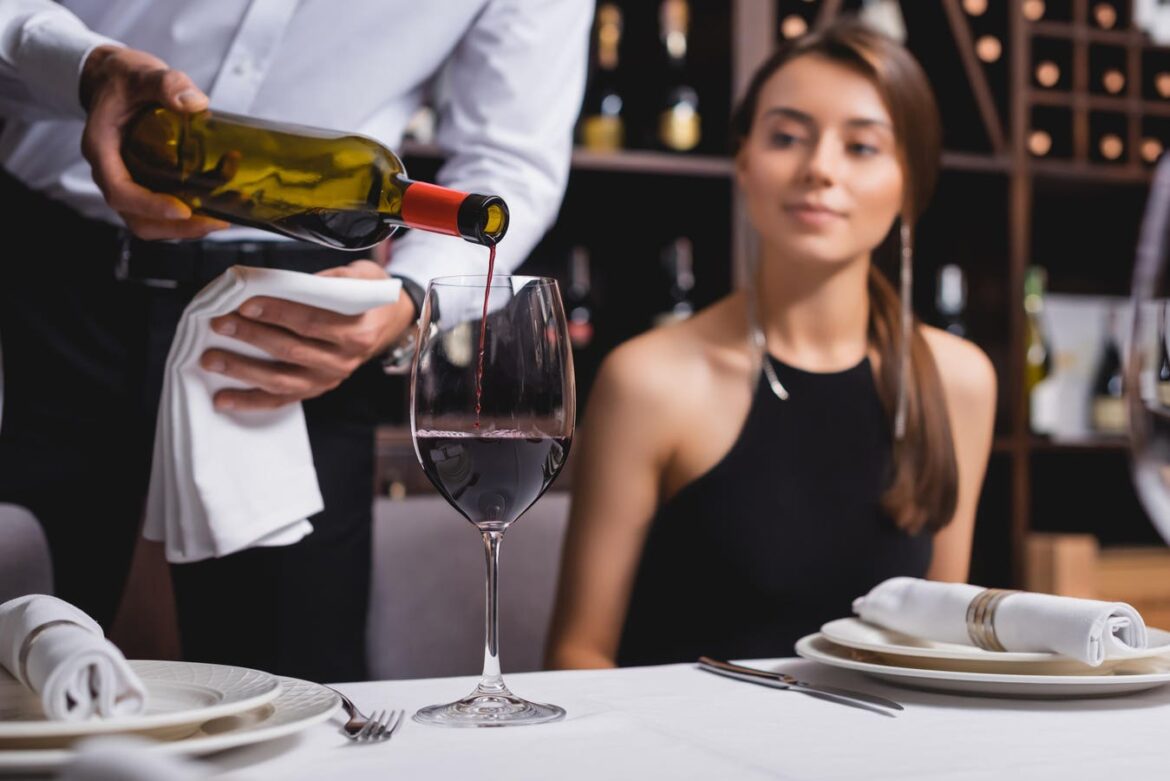
A sommelier pouring wine near woman at table in restaurant
getty
To weather the decline of wine sales in dining, restaurants and wine bars are encouraging moderate and responsible wine consumption. Here are five strategies they are adopting.
When traveling through Italy, experiencing the authentic local lifestyle means enjoying delicious meals at local restaurants, whether it’s a sophisticated Michelin-starred restaurant or a cozy, family-run trattoria. Whenever you dine, wine is a must. Be careful with it, however. The Italian highway code has been updated to enforce stricter rules on drinking and driving, with severe penalties for those who break them. The new regulations came into effect in Italy during the worst period possible for restaurants and wine bars: December 2024. The Christmas holiday season is the traditional time of company dinners and celebratory toasts – all events where the wine flows freely. As was to be expected, many Italians and visitors alike became immediately more cautious about drinking when planning to drive, leading to significant changes in dining habits. Many people cut back on their visits to bars and restaurants, and approximately one in four consumers chose restaurants or bars closer to their house to avoid driving. Others stated that they would have given up wine completely and switched to other entertainment venues, where alcohol is not involved, such as museums and cinemas. Federvini’s data from TradeLab Observatory indicates that there was a 12% drop in wine consumption during the first four months of 2025 when compared to the same period in 2024.
The Digital Breathanalyzer Of FIPE
To curb this worrisome trend and safeguard a sector that in Italy is worth 14 billion euros, restaurants, trade associations ( Filiera Italia, Fipe-Confcommercio), and Coldiretti, the main national confederation of farmers, agreed to focus on promoting moderate and responsible wine consumption, launching the “Keep Calm and Bevi Vino Italiano” campaign. The goal is emphasizing that wine is a cultural symbol and a vital part of the Mediterranean diet, valued for its health benefits when enjoyed responsibly. To encourage consumers to appreciate wine without overindulging, they have created a digital breathalyzer integrated into the Fipe app (downloadable in iOS or Android app stores). It is also accessible in Fipe restaurants via a QR code on the menu. This tool is designed to help diners assess their condition before driving. Guests can take a test to estimate their blood alcohol level based on their gender, weight, and wine consumption. “Wine is a symbol of Italian culture and tradition, an integral part of the Mediterranean diet, and recognized by numerous studies for its beneficial effects when consumed in moderation – said representatives of Fipe, Coldiretti, and Filiera Italia – We urge consumers not to give up the conviviality represented by wine at the table and in restaurants, because every Italian glass of wine carries with it history, identity, and stories of our territories.”
The customized bags for wine bottles of the Tuscan project “Ogni Goccia Racconta”
D.MugnaiBring Your Bottle Home
If you cannot finish your bottle at the restaurant, there is a practical solution: bring it home. ‘Every Drop Tells A Story’ is an initiative of the Tuscany Region to promote regional wine production and, at the same time, fight waste. If the bottle ordered is not completely consumed at the end of the meal, the restaurateur provides customers with a special bottle bag that allows them to safely and legally transport the wine. To be fair, the idea of bringing home an unfinished wine bottle in a special shopper is not new. In recent years, many restaurants have began to use customized wine bottle bags as a marketing tool. The goal to promote moderation in wine consumption (saving the sales of it) has given new impetus to the initiative. Even Assoenologi, the most important national association of winemakers, has launched a similar proposal with the project ‘Portami a casa’ (“Bring me home”). In this case, however, the wineries themselves provide customized bags for the leftover wine bottles, with their logo. The initiative, stated the association’s president, Riccardo Cotarella, “presents an opportunity for producers to strengthen their bond with consumers by offering an additional service that enhances their brand. Similarly, restaurateurs and various venue managers can actively contribute to road safety and enhance the overall customer experience.”
Riccardo Cotarella, Italian vintner and wine consultant is standing in his family’s wine cellar. Photo: (Photo by Petra Kaminsky/picture alliance via Getty Images)
dpa/picture alliance via Getty ImagesA Glass At Time
Another way to preserve the habit of serving wine with food is suggesting it by the glass. Thanks to wine dispensers or preservation systems like Coravin many restaurants have expanded their wine-by-the-glass offerings. Some of them are even developing curated wine flights, offering wine tasting sets of 3-4 small pours that allow diners to enjoy variety without consuming too much wine, which could prevent them from driving. This way the customers can taste even high-quality wines without having to buy a full bottle.
A Taxi Ride To Home Or A D&B?
In many countries, when a group of people decides to dine somewhere, usually one of them will have to keep off alcohol to be the one who brings all the others home driving the car. In Italy, this habit is not so common yet, thus some restaurants offer collective taxi services or private shuttles for a small added cost. But there is still another option to compensate for the issue of driving after dining: a “d&b”. These are places that offer their customers the opportunity to stay overnight within walking distance of the restaurant, perhaps with breakfast included. These restaurants are not hotels, and have only a few rooms. There are no official figures about how many they are currently, but according to the ‘Italian D&B’ Guide”, there are at least 100 quality restaurants with charming rooms.
And maybe this is the most satisfying conclusion to an pleasant Italian dinner filled with delicious food and great wines.


Dining and Cooking